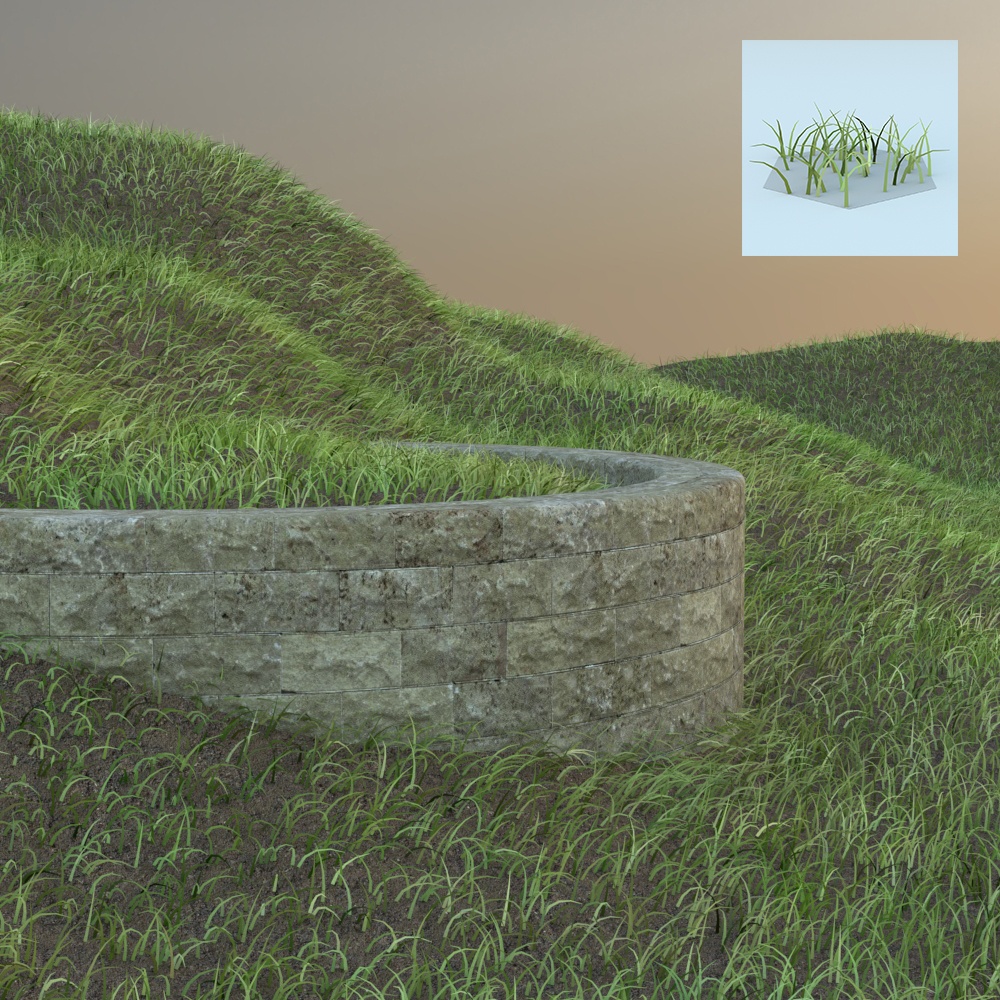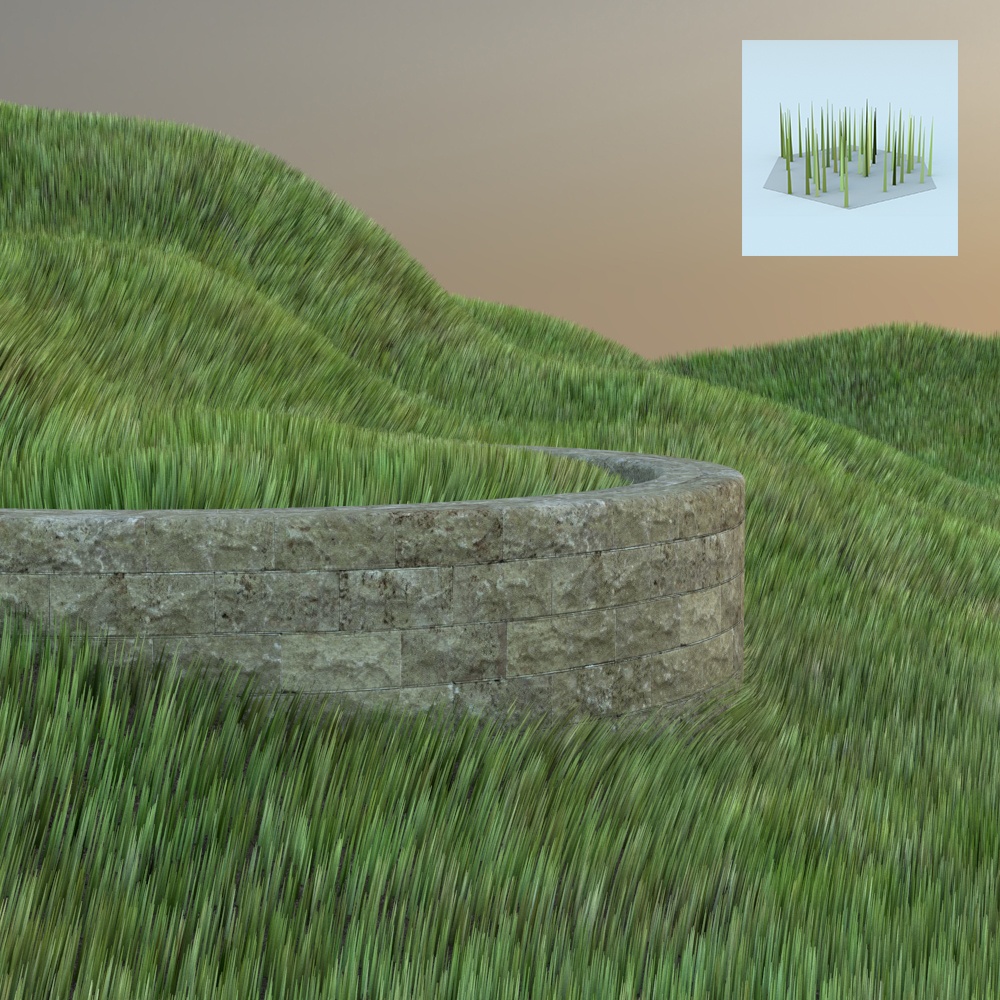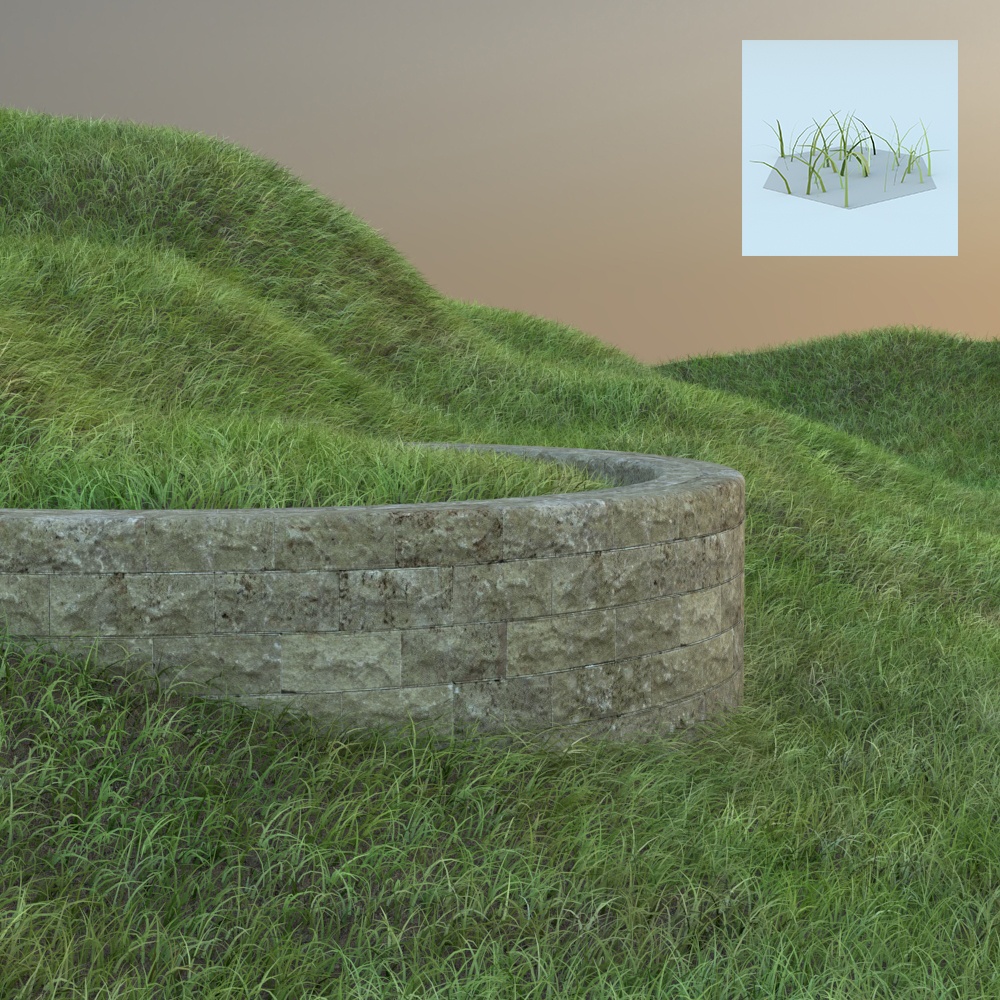This page provides information about V-Ray Fur in V-Ray for Rhino.
Overview
UI Paths
||V-Ray Asset Editor|| > Geometry (right-click) > Fur
||V-Ray Asset Editor|| > Create Asset (left-click) > Geometries > Fur
||V-Ray Objects Toolbar|| > Fur (left-click) > Add Fur to Selection
||V-Ray Objects Toolbar|| > Fur (right-click) > Remove Fur from Selection
Rhino Menus Ribbon
||V-Ray|| > Objects > Add Fur to Selection
Creating V-Ray Fur
Fur creation is possible in the V-Ray menus (V-Ray > V-Ray Objects > Apply Fur to Selection) and toolbars, as well as in the V-Ray Asset Editor (Asset Editor > Geometry > Fur and use the Apply to Selection context option). vrayFur command also applies Fur properties onto a selection.
Fur creation is available in the Rhino Properties V-Ray section as well.
When V-Ray Fur is applied to an object, a viewport widget resembling a strand appears on each face. The strand indicates the normal vector used by the Fur as well as the Fur length parameter value.
It is possible to override one Fur asset with another using the Apply to Selection context option.
Once a Fur geometry is created, it can be toggled via its asset icon as well as via the Toggle in parameters.
To remove the Fur from a selected object, use the Remove from Selection context option.
Parameters
Example: Count Area
Example: Length
Example: Thickness
Example: Taper
Example: Gravity
Example: Bend
Example: Global Scale
Example: Knots
Variance
Variance Direction
Variance Gravity
Variance Length
Variance Thickness
Curl
Example: Curl Radius
Example: Curl Radius Variation
Example: Number of Curls
Example: Maps
Level of Detail
Example: Start Distance
Example: Rate
Material
Options
V-Ray Fur in Rhino Properties Panel
Notes
- Fur objects can be copied by using the Copy tool. It can be instanced by using the _Array command or Alt+drag the fur object in the Rhino viewport.
- Global viewport display of the selected VRayFur can be toggled from any associated object.
- All fur objects created with versions older than 3.0 will be migrated accordingly upon being opened.
- Starting with V-Ray 5.20.01, V-Ray special objects (Fur/Clipper/Displacement/Mesh Light/Scatter) are not deleted from the Asset Editor, when the last item with the corresponding special object assigned to it, is deleted from the viewport.




























































































